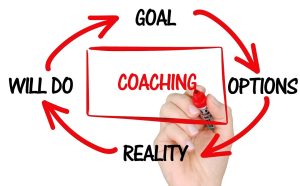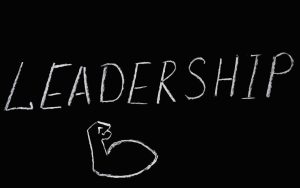Even people who are not familiar with sports know that, if a goalkeeper has lost its confidence, it is difficult for the rest of the team to do their best. But only a few HR professionals and business leaders apply the same logic to the importance of building confidence of their employees for the better business performance of the whole organization.
As suggested by professor Rosabeth Moss Kanter from Harvard Business School, one of the key aspects of confidence is that it comprises “positive expectations for favorable outcomes”. Think of it as a self-propelling mechanism between confidence and success. Ms. Kanter goes on to suggest that the same mechanism is applicable not only to individuals but also to teams and organizations. In essence, if your organizational culture is based on success and assurance, it helps to build confidence of every individual member.
“On the way up, success creates positive momentum. People who believe they are likely to win are also likely to put in the extra effort in a difficult moment to ensure that victory. On the way down, failure feeds on itself. As performance starts running on a positive or negative path, the momentum can be hard to stop. Growth cycles produce optimism, decline produces pessimism.”
So how can the organization build confidence and success culture where they amplify each other into a self-propelling cycle?
Build Confidence on Strengths of Your Organization and Its Members
Most hear ‘May I give you some feedback?’ and freeze thinking what they have done wrong. Hearing positive feedback is unusual, let alone speaking about what you are great at. But it’s exactly the focus on our strengths that can build confidence-success cycle mentioned above. Don’t be pushed back if people feel uncomfortable speaking about their strengths. Typically during lifetime, we get to learn more about our weaknesses, not strengths. Hence, the first step is to build self-awareness of strengths, or activities that energize you and enable getting into the ‘flow’. There are many ways of finding one’s strengths. By far the fastest and most reliable approach is to take a strengths assessment like the HIGH5 test (www.high5test.com). Such tools provide common ground and framework across the organization for discussing one’s strengths and for finding relevant opportunities for strengths development.
Establish Positive Habits and Routines
Awareness comes first, but it has little effect until implemented in action. Once a person discovers their strengths, the next step is to find ways to apply them. Scientists say those with a chance to apply their strengths on daily basis are 3x more likely to report higher life satisfaction and engagement at work. Creating positive habits and routines means doing actions that energize and fulfill you on a continuous basis. This, in turn, can build confidence as a permanent feeling.
Cultivate Positive Atmosphere
To build confidence-success cycle on the group level – every member of the group should have the feeling of acceptance and appreciation. When one feels recognized for their strengths, special talents and character traits, it generates positive feelings and emotions and supports the success cycle. For that, HR team needs to help managers understanding the importance of small win celebration. This needs to be supported by company-wide mechanisms for success sharing across the organization. The key element here is to keep the atmosphere authentic by accepting the success of all equally. Otherwise, one can intensify competitive tensions instead of building positive and appreciative environment.
Share Positive Customer Feedback
When it comes to celebrating wins, both matter – internal and external. Positive feedback from clients is yet another way of appreciating a job well done. These positive emotions strengthen the feeling of purpose, confidence, alignment within the organization. Naturally, not all teams and members of your organization have a direct interaction with clients. However, establishing dedicated processes and spaces for positive feedback sharing will generate that spill-over effect you’re looking for. Besides, appreciative client feedback helps augmenting your value proposition rather than always being stuck with error fixing.
Turn Managers Into Positive Role Models
Regardless of your management style, it has an inevitable effect on behaviors and decisions of your subordinates. The role of a manager in a positive organization is not to keep everyone on the leash. Instead, it is to create an environment where everyone can bring out their best selves, their strengths, talents and character traits for the benefit of the organization. Instead of yet another training – treat managers with the same approach you want them to pass on. As a side effect, you will increase manager retention, leadership stability, and knowledge transfer. All three are essential for continuing a long-term confidence-success cycle one initiated.
Create Strengths-Based Teams
The more employees leverage their strengths, unique talents and character traits – the more appreciated, supported and engaged they feel. These positive feelings ignite improved collaboration, creativity, tolerance and well-being within the team. The more supportive environment allows people to be more vulnerable, to admit and to learn from their mistakes. To unlock these benefits, the manager needs to create opportunities for team members to use their strengths and talents. The most effective way to do it is to build teams with a diverse set of strengths and learn how team strengths can complement each other.









